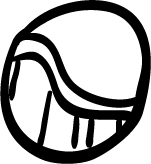No-Kill
Philosophy
San Antonio Pets Alive! does not euthanize pets for space. We are a safety net for the most vulnerable animals – the sick, injured, and abused – who are at risk of being euthanized at the city municipal shelter. By being the last resort for these pets, we’ve been able to help bring the city of San Antonio Animal Care Services to a live release rate of 85% to 90%.






FAQs
There is no clear-cut definition of No Kill. However, it’s important to know that “no kill” does not mean that shelters do not kill animals.
Some organizations define “no kill” as a 90 percent live release rate while others use less stringent standards. Generally, a “no kill” shelter does not euthanize pets who can be adopted or when the shelter is full, reserving euthanasia for animals who are terminally ill or a danger to people or other pets.
Most “No Kill” organizations limit their intake to only the healthiest animals. SAPA! serves the most vulnerable pets – the sick, injured, and abused – and manages the care of the pets while adhering to the best standards of care for them which are outlined by the veterinarians at Austin Pets Alive!
Every pet is different, and every situation is different. Once we intake an animal, our team develops a plan of care. The plan includes addressing medical needs and finding the best foster home possible so we can learn about their personality. Then we work with our fosters, as a team, to find the pet the best home possible so the animal can live its best life.
Sometimes SAPA! will euthanize dogs or cats for medical reasons. In the past 10 years, we’ve seen many distemper puppies and dogs and we do our best to treat this disease but there is no cure for distemper. Once the dog or puppy’s brain has been impacted by Distemper and the puppy can no longer stand or eat on his or her own, we may determine that the suffering is so great the most humane course of action is to help the puppy or dog cross the rainbow bridge.
Since San Antonio Pets Alive! primarily saves the lives of dogs on the euthanasia list at the city municipal shelter, we often have very little time to evaluate a dog’s personality. Once a dog is in our custody, our team begins to learn about the dog’s behavior by spending time with it or placing it with a foster. Unfortunately, some dogs have been traumatized by former owners to the point that SAPA! can’t handle them safely and they are a danger to people and/or pets. In these rare instances, our team may make the decision to euthanize this animal if he or she can’t be safely adopted out to a person.
No! The Building One Rescue Center transition kennels give ACS animals that were at risk of euthanasia more time to find placement. The majority of the dogs that are in our transitional kennels are still ACS animals. However, we employ nine individuals to work at our Rescue Center and care for these animals, and SAPA! pays for their salaries and benefits.
SAPA! is the last chance rescue in San Antonio pulling dogs that are often overlooked by other organizations. Without SAPA!, the dogs in our transitional kennels would already be dead.
When SAPA! is not able to successfully find a safe place for the dog with a foster, rescue, or adopter, the difficult decision must be made whether to remove the dog from building one to allow another dog additional time. While these dogs are waiting for miracles in the transition kennels, they are not actually “owned” by San Antonio Pets Alive! and are not “safe” until they have a confirmed outcome and leave the ACS campus. We can only provide this temporary refuge with the help of the community (fosters, adopters, and rescue partners), who free up kennel space and allow more to be saved in their place.

Last Chance
Safety Net
We firmly believe every pet deserves the opportunity to live their best life.
Adoption
Animals find their forever families through our multiple locations, medial center, and transport program
Foster
Temporary homes give dogs and cats the chance to be happy and out of a kennel while looking for their forever family. This creates space to save another animal at risk.
Transport
Relocating dogs to trusted Rescue Partners in other communities that have available space.
Rescue Partners
Trusted rescue partners who take in dogs shared through SAPA! Placement Team's marketing pleas.
Medical Needs
Dogs and cats who need help healing from medical conditions ranging from minor to severe. 80% of SAPA! animals need medical care.

